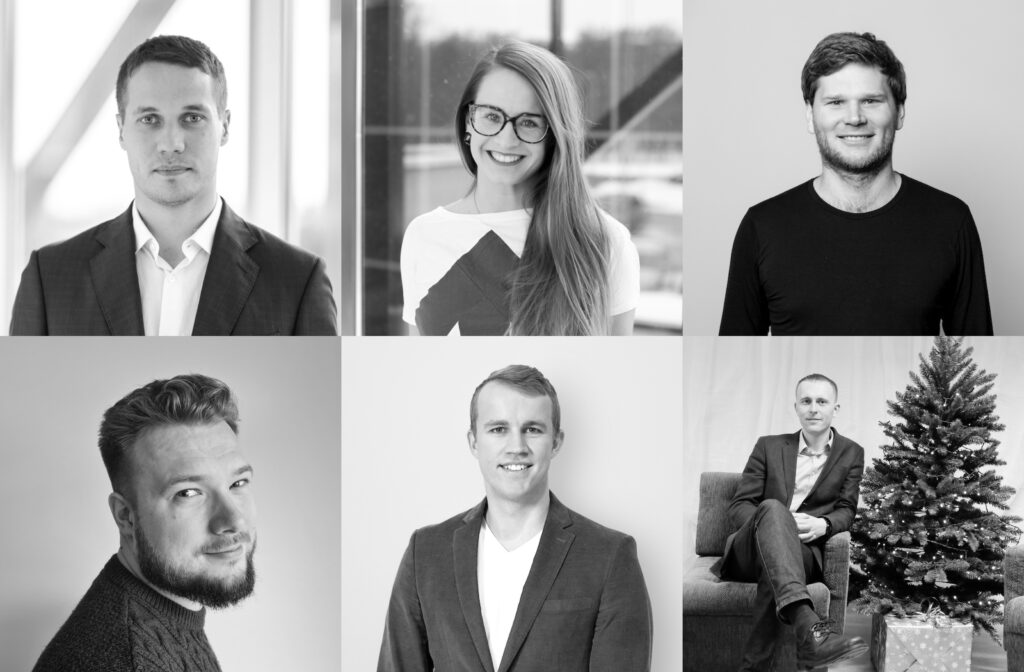Estonian mobility entrepreneurs are on their way to the top. I asked Estonia’s flagship mobility entrepreneurs about their innovative practices and how they portray the future of mobility.
Comodule
Kristjan Maruste, CEO

What is the innovation in Comodule’s products and services about and how does it influence the form and function of mobility we have known so far?
Comodule was the first enterprise in the world to connect bicycles to the internet. We are the only company outside of China to produce their own electric kick scooters. In that sense, our innovativeness is in being a front-runner.
Reading data from electric bikes, communicating with the manufacturer, performing software updates, and handling insurance agreements put together all requires considerably less time and money from all parties involved thanks to Comodule’s business. This way we are effectively accelerating implementation of environmentally sustainable, zero-emission transport. Electric mobility is thus not only about providing comfortable solutions for the user and profit for the businessman, but it may also play an important role in the shared quest toward improving our global living environment.
What is your future vision and the direction you see mobility solutions headed toward in your area of expertise?
Our long-term goal is to become a broad-based developer and provider of light traffic and electric mobility solutions with a main focus on DIY. We have already successfully introduced the electric kick scooter—a DIY product targeted at the end user.
In the future, we would like to increase our capacity at Comodule to manufacture our own light traffic vehicles and connect them to the internet by selling tens of thousands of units. We want to make electric mobility in light traffic the norm by developing our products and services so that an e-bike would be capable of fully replacing a car. Moreover, a zero-emission, mobile-controlled transport vehicle could become more than a replacement for a car producing direct emissions—it could become an advantage. The city centre should focus on providing electric light vehicles of some sort, seeing that they burden our urban space much less than cars do.
Starship Technologies
Rao Pärnpuu, Product Manager

What is the innovation in Starship’s products and services? How does it influence the form and function of mobility we have known so far?
Starship is developing an autonomous robot capable of moving on pavement and transporting goods independently or with minimal human support. Our goal is to solve two challenges which are difficult to untangle simultaneously—to offer a demand-based transport service that would be invariably available yet with minimal costs for the user. Our focus is on solving the so-called last mile problem which is what usually creates up to half of the transportation cost and often fails to provide a positive experience for the customer. Robots enable transforming such services to where they are comfortable and available to anyone on a daily basis.
What is your future vision and the direction you see mobility solutions headed toward in your area of expertise?
In the long run, we see that moving people and things from point A to point B will eventually produce the same result as what happened with electricity and information: the cost of an isolated event is small and inconsequential in daily decision-making. Just like we do not ponder on how many euro cents we spent on the internet and the electricity when we opened a webpage, in the future it will not be relevant how much money was spent on retrieving a pack of milk from the grocery store.
We see robots reshaping the way we think about object mobility and bringing in new future concepts we might not even be able to come up with ourselves. Just like the pioneers of the internet could not foresee the ecosystem that is thriving today based on their invention, we are equally unable to evaluate what the future will look like exactly. One thing, however, is for certain: people will be having many more opportunities which they have not had access to previously.
Auve Tech
Johannes Mossov, CEO

What is the innovation in Auve Tech’s products and services? How does it influence the form and function of mobility we have known so far?
Auve Tech is in the business of developing self-driving vehicles and creating autonomous transport solutions. Auve Tech’s autonomous minibus, a Self-car, is the first self-driving vehicle in Estonia certified safe for utilisation in the streets. It is a fully valued part of the public transport system which has already been employed in three countries: Estonia, Finland, and Greece.
Auve Tech’s minibus is the world’s most compact and adaptable last mile transport vehicle with level 4 autonomy. The Self-car does not require additional investments to infrastructure. Small and light, an architecture reminiscent of a standard car allows the minibus to access and commute on narrower streets as well. The electric Self-car is equipped with three LiDARs and five cameras offering a 360-degree visibility angle for reacting to external traffic behaviour. Additional safety is guaranteed by the safety operator accompanying in the bus or managing a bigger fleet of buses from the control space. The maximum speed is 25 km/h for this electric device that is meant for busy areas with heavy traffic, and with capacity to accommodate 8 passengers.
So far, Auve Tech’s self-driving bus has serviced passengers as part of the public transport system aimed at facilitating the last mile transport in the Ülemiste City business centre in Estonia, in Tampere, Finland, and Lamia, Greece. The low-speed, safe, quiet and environmentally sustainable autonomous vehicle was created to enable public transport in places where regular line buses don’t fit or are not economically sensible. Long-term, improving public transport will decrease the need to commute by car—this means less noise, pollution, and more space for people in the urban environment.
What is your future vision and the direction you see mobility solutions headed toward in your area of expertise?
The future of mobility is primarily moving toward more environmentally sustainable solutions. A large portion of this is about optimising last mile transportation and increasing its efficacy as it is the last mile that is the fastest rising part of the chain in urban traffic. We foresee a future where the majority of last mile transportation is performed by autonomous vehicles that are able to effectively plan their trajectories and logistical schemas. In addition to smart robots, the future is moving from carbon-based fuels to renewable energy and hydrogen solutions for obvious reasons. Parting ways with internal combustion engines will create our cities of the future that are not nesting in dense smog, noise, and dust.
Bolt
Sandra Särav, Head of Sustainability

What is the innovation in Bolt’s services and how does it influence the form and function of mobility we have known so far? What is your future vision and the direction you see mobility solutions headed toward in your area of expertise?
Urban transport is ineffectively arranged: traffic jams, air pollution and noise brought on by motorisation are a growing problem. Our urban space is also dominated by cars: on average, 2–3 parking spots are allocated per car which is about 40–60 m2 of parking space, the equivalent of a spacious 2-bedroom apartment.
In the context of environmentally friendly transport there is a lot of talk about electric cars, but these will not solve the problem of urban transport. Electric cars can certainly reduce the amount of emissions but they will still create traffic jams and require equally large and numerous parking spots. To effectively and sustainably organise urban transport, the amount of personal cars in traffic should diminish and be replaced with alternatives such as walking, light traffic vehicles, public transport and taxi service.
Bolt is the first technological platform in the world to offer shared rides (carpooling), electric bike rent and electric kick scooter rent, and food ordering service through one single app. This enables us to operate effectively, maintain low service prices and function as a comfortable alternative for personal cars.
Demand-based transport offered by the private sector can and should never replace public transport. However, in many cities and towns, the public transport network is in dire need of an upgrade as it is unable to meet the actual needs of the residents. We believe that in five to ten years from now, public transport, demand-based taxi and various light traffic vehicle rent services will have become so well integrated that the need for a private car will have diminished considerably.
Cleveron
Arti Kütt, Cleveron Estonia Sales Project Lead

What is the innovation in Cleveron’s services and how does it influence the form and function of mobility we have known so far?
All Cleveron’s parcel lockers enable a cost effective, fast, safe and user-friendly goods handover service to our partners who are mostly logistics and retail companies.
What is your future vision and the direction you see mobility solutions headed toward in your area of expertise?
Currently, most parcel machines are located in shopping centres but what users actually want is to receive their e-store packages and online food orders from a parcel locker as close as possible to home or place of employment. That is the foundation beneath Cleveron’s ambition to create a new web of parcel lockers in Estonia.
Cleveron’s parcel lockers are programmed to work as an open network which means that all e-stores and courier companies can use them to deliver their goods. The parcel lockers can also be used for food packages in addition to e-store packages. A large portion of the network is made up of private parcel lockers that people can rent for themselves and place in front of their private home or apartment building. The other part of the parcel machine network is composed of Cleveron’s field parcel lockers that we wish to install as close as possible to places of employment.
The greatest positive shift for the user lies in the fact that Cleveron makes the entire logistics chain invisible. This means that the user will neither have to make an extra drive stop to pick up a package nor wait for a courier since all the packages and e-store orders are already there, waiting for you.
Saaremaa Municipality
Kaarel Tang, Head of the Economic and Administrative Department of Saaremaa Municipality

What is the design of the demand-based transport pilot project for Saaremaa and what challenges have you faced executing the plan?
Several years of work has been put into developing solutions for demand-based transport in Saaremaa. Inhabitation is sparse in many regions in Saaremaa, which is why organising a stable bus schedule is unreasonable or the schedule is scarce. Our main priority is to solve the mobility concerns of the people who remain unreached by public transport. An indefinite bus schedule enables people to travel to places where they actually need to go at a time convenient for them. In case of more users than one, the software solution will try to coordinate and accommodate in the vehicle as many passengers as possible.
Veritably, this seemingly simple task presents a multitude of tiny details that may go unnoticed at first glance. The unfortunate reality and main issue is that the state cannot fund demand-based transport within the confines of a public service contract in the context of public transport law, and for the time being legislation is forbidding provision of the service in the desired form. Demand-based transport cannot be categorised under any mode of transport. The state is aware of the issue and respective action is being taken to make the necessary changes.
We have considered several funding options and hopefully the first pilot project can soon be launched to retrieve experiential knowledge. We have set our sights on the Sõrve region where the locals have expressed interest and the region is clearly surrounded by sea.
Published in Maja’s winter 2021 edition Smart Living Environment (103)





